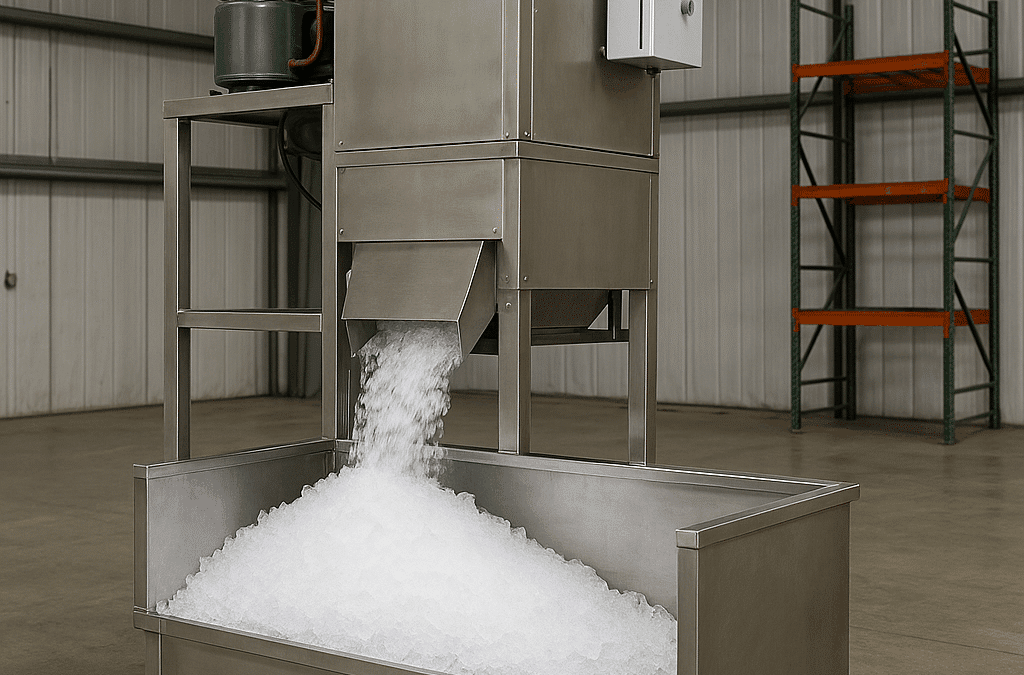Industrial environments depend on precision, consistency, and operational efficiency. In sectors that handle temperature-sensitive materials or require large-scale cooling processes, ice is not just a utility but a necessity. From seafood processing plants to concrete production sites, the demand for dependable ice production is growing. This is where industrial ice machines prove to be essential infrastructure.
Industrial ice machines are engineered to deliver high-output performance, often producing thousands of pounds of ice per day. These machines are specifically designed for use in commercial and industrial settings that cannot afford disruptions due to inconsistent ice supply. They support a wide variety of operations by ensuring a stable and reliable source of cooling.
What Makes an Ice Machine “Industrial”?
An industrial ice machine is built for durability, efficiency, and heavy use. Unlike smaller commercial models, these machines are made with robust materials such as stainless steel and feature components designed for long-term, continuous operation. Production rates for these units can exceed 10,000 pounds per day, and their internal systems are optimized to withstand high-demand environments.
These machines often incorporate features like re-circulating water systems, advanced compressors, and low-maintenance evaporators. This allows them to maintain efficiency while reducing utility costs and mechanical downtime. In industries where ice plays a functional role—rather than simply a convenience—these machines help support production, quality control, and regulatory compliance.
Ice Use in Food and Beverage Processing
The food industry is highly sensitive to temperature control. From harvesting produce to processing seafood, ice is used to prevent spoilage and maintain freshness. In particular, cracked and flake ice are widely used because of their ability to cool rapidly without causing damage to delicate products.
In seafood processing, for example, fish is often chilled immediately after being caught or harvested. Industrial ice machines located on-site or near distribution centers allow processors to pack and ship products under optimal conditions. This minimizes the risk of degradation and helps companies meet health and safety standards.
Role in Construction and Concrete Cooling
Concrete is a temperature-sensitive material. During mixing and curing, if the internal temperature of concrete rises too high, it can affect its structural integrity. In warmer climates or during the summer months, the risk of overheating is significant.
To manage this, contractors introduce ice into the concrete mix to lower the temperature. Industrial ice machines are used on-site or nearby to supply large quantities of ice consistently throughout the day. This application requires reliable and timely ice delivery, which only high-capacity machines can provide. The use of industrial ice machines ensures better control over concrete quality and extends the flexibility of working hours, especially in hot weather.
Cold Chain and Pharmaceutical Logistics
Perishable goods like fresh produce, dairy, and pharmaceuticals require constant temperature control during transportation. Industrial ice is used to supplement mechanical refrigeration systems and to act as a buffer during loading and unloading periods. It also provides localized cooling within shipping containers or pallets.
In the pharmaceutical sector, certain medications and biological materials must be kept within a narrow temperature range. Industrial ice machines support the production of consistent ice types and volumes, helping logistics providers maintain proper handling protocols.
Choosing the Right Machine
When evaluating options, businesses must first consider the type of ice required. Flake ice, cracked ice, and block ice each serve different functions. For example, flake ice is ideal for packing and transporting food products, while cracked ice offers fast cooling and ease of distribution.
Another key factor is production capacity. Selecting a machine with too little output may result in operational delays, while one with too high of a capacity can lead to inefficiencies. Businesses must also evaluate installation requirements, including space constraints and electrical access. Some models require specific ventilation or drainage systems, so site compatibility is a practical concern.
Energy efficiency should also be considered. Many industrial machines are now equipped with components that reduce power usage without compromising performance. This not only reduces operating costs but also aligns with sustainability goals.
A wide range of options is available to support industrial-scale production. For more information on models and specifications, explore the full lineup of industrial ice machines.

